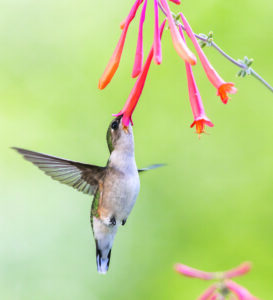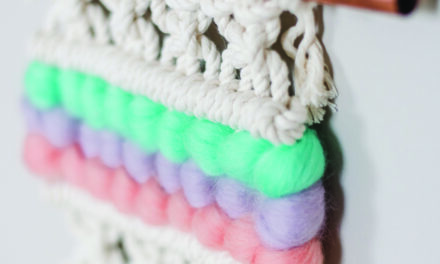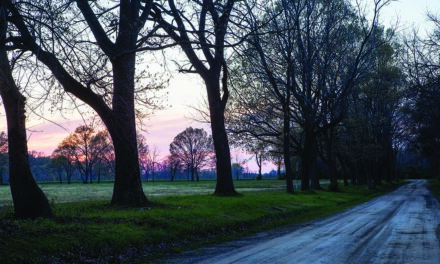
Hummingbirds have a special fondness for trumpet-shaped flowers, which seem to be made just for their long beaks such as honeysuckle.
All winter my family feeds our variety of backyard birds, taking care to stick out peanuts for our Blue Jays and gathering round the window when our little woodpecker comes to dangle off the feeder.
It all changes come April though, as they quickly fall to the backburner when the hummingbirds come fluttering into town.
When it comes to hummingbird season, the woodpecker could be juggling Safflower seeds wearing a party hat and our eyes would be glued to the hummingbird feeder, waiting for one to flutter up to it.
The very end of March into April started as a rocky time on social media as neighbor after neighbor spotted hummingbirds fairly early this year making hummingbird watch officially on.
My husband caught me sulking for a day or two after a friend, who I do love dearly, saw her first hummer and I had yet to see a flicker of one.
I was in the “depths of despair” as Anne of Green Gables would say, wondering if it would be a year I’d get none and questioning if I was a bad person who didn’t deserve hummingbirds. But alas, they did show up, with their flickering little wings of hope.
My hummingbird journey began with a feeder I got from my dad.
I had just pulled it out, set it in our mudroom and walked out to the shop to get a hook to hang it, and in the two minutes I was gone, a hummingbird had already appeared, with no other feeder being in the yard for several years. It was awesome.
As soon as our farmhouse had windows put in on all sides of the house, you can bet I had a feeder to go on all sides of the house as well. As it turns out, it was very practical to get a plethora of feeders, as hummingbirds can be quite territorial. It’s not uncommon to see one chase another away so having multiple feeders can help keep your crowd pleased.
My original feeder was very traditional — clear glass with the hourglass shape, a red base with yellow flowers. As I went to purchase more, I noticed there’s been some developments and tweaks adding quite a few features.
First with color. Like white pants after Labor Day, the rules on feeders being classic red is very much out the window. Hummingbirds like a variety of bright colors, with pink, orange and yellow being the most popular after red.
One of my newer feeders is a clear mason jar style bottle with a simple red emblem on it with red feeder flowers and it keeps a steady stream of visitors, the same as my entirely red one.
A friend has an orange, red and yellow bespeckled one and she has very much stolen all her neighbor’s hummingbirds with it. (Her neighbor is also her mother-in-law!)
I was nervous putting a less prominently red one out, but you could put your familiar feeder in the spot for your new feeder to get the birds used to it, then rotate them out so they’ll know both spots.
Hummingbirds have spatial memories, so even if you had a feeder in a spot a year ago, they’ll come back looking for it.
Another change that has come about is the shape.
The traditional “bottle” style with the water source screwed into the base can now be anything from blown glass to a mason jar.
This style is great to hold large amounts of water for multiple birds and is easier to keep an eye on when you are running low.
Don’t overfill. Usually a cup of solution is more than enough for our area, though filled to the brim, many feeders hold up to three cups.
Overfilling just makes waste and makes the feeder harder to clean.
If you stick with this style, grab a cheap bottle brush or an old toothbrush to save you time and ensure that your feeders are all the way clean for your critters.
There’s also the newer-to-the-scene saucer or dish style, in which the water is all retained in the base.
These are much easier to clean without the long nooks and crannies but with the limited water retention, you’ll need to refill them more often. A good perk for these is that you can see your birds no matter which hole they feed out of with an unobstructed view.
They can also be an easier to twist open option for those with weaker wrists and hands.
Have you ever been in awe of how a hummingbird can drink while fluttering in mid-air? Many feeders do not have a perch and they aren’t necessary, but if the perch is there, hummers will use it.
Another improvement you can look into if your yard has an influx of bees or ants is a “moat.” Just as a castle moat keeps out the bad guys, an area of water around the feeder keeps the insects out.
If you already have a feeder without a moat, first check that your feeders aren’t leaking.
If that doesn’t seem to be a case, you can purchase a moat separately to add on to your feeder to prevent ants from creeping down.
Whatever feeder you select, be sure to keep their water fresh, especially as the months start to heat up.
Placement in a shady spot is always helpful too.
I keep a 6-cup measuring cup right next to the sugar, both reserved just for my feeders so I can easily mix and let it dissolve while I gather them.
I fill mine on days my kids don’t have sports, so exactly three days a week I automatically know to do so, whether it needs freshening or not.
Try coming up with your own rhythm for “hummingbird days,” or mark your calendar or set a phone reminder for a time you are frequently home if you need to.
Beyond feeders, if you head to your local garden shop you might be surprised how many goodies made for hummingbirds are out there.
Take hummingbird rings. They take a bit of patience but can be fun to fiddle around with.
You stick the ring in a nearby flower bed or try to prop up near your feeders where the hummingbirds can explore it and become familiar with it for a few days.
Then, you put it on and sit patiently waiting for them to come.
The rings have a tiny reservoir so you need to commit to fill it daily.
Hummingbird swings are pretty easy to find to buy locally for less than $10 and when set out, the birds flock to them.
You may consider tying a red ribbon or red bead to them to get the initial attraction but soon after, the hummingbirds go right to them and if you’ve never seen a hummingbird on a swing, let me tell you, it is cute!
They look very much at peace, gazing out to the fields thinking little fairy-esqe hummingbird thoughts.
Hummingbirds really enjoy a water feature. If you have a bird bath, they may be interested in it but they can be deep for the dainty hummingbird.
A better bet is a light mister or dripper. You can set a hummingbird stand in front of a mister for birds to get wet or they may rub their wings against the wet leaves and blades of grass in the area. They also will enjoy a subtle weeping fountain.
If you shop online, you may run into something marketed as a “hummingbird nest.”
They are cute, mostly woven and look like a little beehive so they are tempting indeed but know that being elusive little creatures, hummingbirds will very rarely settle down in a man made nest.
If you already brought some, worry not, you’ll probably have some kind of bird move into it.
Nectar is also great for keeping small bugs around and hummingbirds also eat insects and spiders. Consider setting out an overripe banana or apple to attract fruit flies for the hummingbirds to eat.
Lastly, make your yard a colorful one. Aside from bright feeders, they also appreciate your vibrant garden decor as an attraction and of course, don’t forget their natural feeding source of flowers.
They have a special fondness for trumpet-shaped flowers, which seem to be made just for their long beaks to enjoy so look for butterfly bushes, bleeding hearts, honeysuckle and hollyhock to name a few.
Plant a variety to entertain your little ones all season long. Natural nectar can also be good for vacations or if you’ll be away for extended periods and a housesitter can’t freshen them.
Hummingbirds can be such a delight and so fun to watch as they cruise around your yard at an amazing 30 miles an hour.
It is but a short and magical season so be sure to enjoy it.





